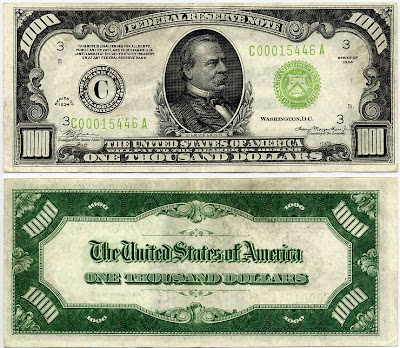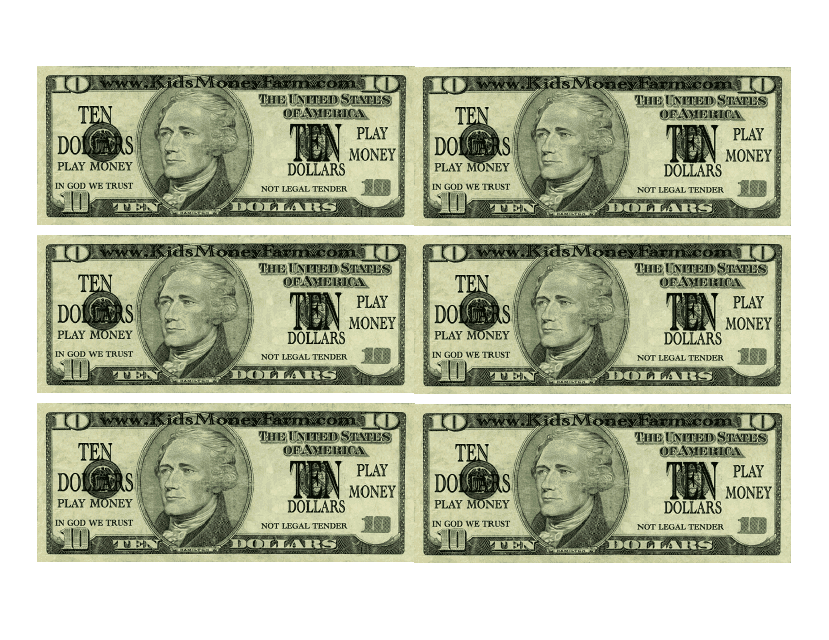Welcome to my blogpost, where today I am going to talk about a fascinating topic that has always intrigued me - the ten dollar bill. You might think that this is just a simple piece of paper with a monetary value, but there is so much more to it than meets the eye. Join me as we explore the history, design, and significance of the ten dollar bill.
The Design
Let’s start by examining the design of the ten dollar bill. The image I found shows the front of the bill, which features a portrait of one of America’s most iconic figures - Alexander Hamilton. Hamilton was a founding father of the United States and played a crucial role in shaping the nation’s financial system. The portrait captures his dignified and intellectual presence.
 Now, let’s turn our attention to the backside of the ten dollar bill. It showcases a stunning image of the U.S. Treasury building. This iconic structure symbolizes the economic stability and power of the nation. The intricate design and attention to detail make the bill not only a means of exchange but also a work of art.
Now, let’s turn our attention to the backside of the ten dollar bill. It showcases a stunning image of the U.S. Treasury building. This iconic structure symbolizes the economic stability and power of the nation. The intricate design and attention to detail make the bill not only a means of exchange but also a work of art.
 The Importance of Currency
The Importance of Currency
The ten dollar bill, like all forms of currency, has a significant impact on our daily lives. It represents much more than just the monetary value printed on it. Currency is a symbol of trust, an essential tool for economic transactions, and a reflection of a nation’s history and culture.
Money allows us to buy goods and services, pay our bills, and save for the future. Without it, the world as we know it would come grinding to a halt. Currency also serves as a unifying force, connecting people from different backgrounds and facilitating global commerce.
Moreover, the ten dollar bill, specifically, holds a unique place in American history. Alexander Hamilton, who graces the front of the bill, was instrumental in establishing the nation’s financial system. His vision and policies shaped the economic foundation of the United States, laying the groundwork for its prosperity.
A Lesson in History
To fully appreciate the ten dollar bill and its significance, we must delve into its historical context. Hamilton’s portrait on the front of the bill is a testament to his important role in shaping the nation. As the first Secretary of the Treasury, Hamilton implemented policies such as the establishment of a national bank and a system of federal taxes, which paved the way for economic stability and growth.
Hamilton’s contributions to the United States extend beyond economics. He was a key figure in writing the Federalist Papers and played a crucial role in drafting the U.S. Constitution. His ideas and principles continue to influence American governance and serve as a reminder of the country’s rich history.
The Art of Currency
One aspect that often goes unnoticed is the artistic value of currency. The intricate designs, detailed engravings, and the use of various security features make each bill a work of art in its own right. The ten dollar bill is no exception.
The images I discovered while researching this topic demonstrate the beauty and craftsmanship that go into creating a ten dollar bill. The front image of Alexander Hamilton captures his likeness with remarkable precision. The shading, lines, and textures give the portrait a three-dimensional quality, making it truly lifelike. On the back, the U.S. Treasury building is depicted with meticulous attention to detail, showcasing the architectural grandeur of the structure.
 The Significance of a Ten Dollar Bill
The Significance of a Ten Dollar Bill
While the ten dollar bill may seem insignificant in the grand scheme of things, its importance cannot be understated. It represents the value we place on hard work, innovation, and the pursuit of knowledge - the ideals that Alexander Hamilton embodied.
Furthermore, the ten dollar bill serves as a reminder of the achievements and progress the United States has made over the years. It pays homage to the individuals who have contributed to the nation’s development and serves as a symbol of hope and prosperity.
Next time you come across a ten dollar bill, take a moment to appreciate more than just its monetary value. Reflect on the history it represents, the artistic skill behind its design, and the principles it stands for. The ten dollar bill is more than just a piece of paper - it is a window into the rich tapestry of American culture and heritage.
Thank you for joining me on this exploration of the ten dollar bill. I hope you found it as fascinating as I did. Stay tuned for more interesting topics and discussions. See you next time!